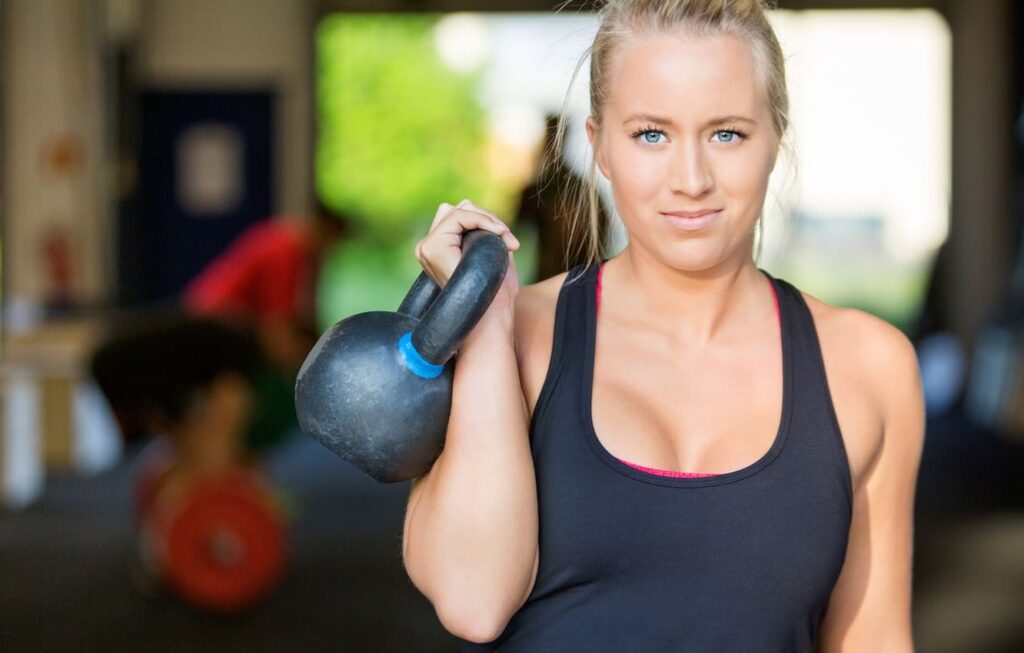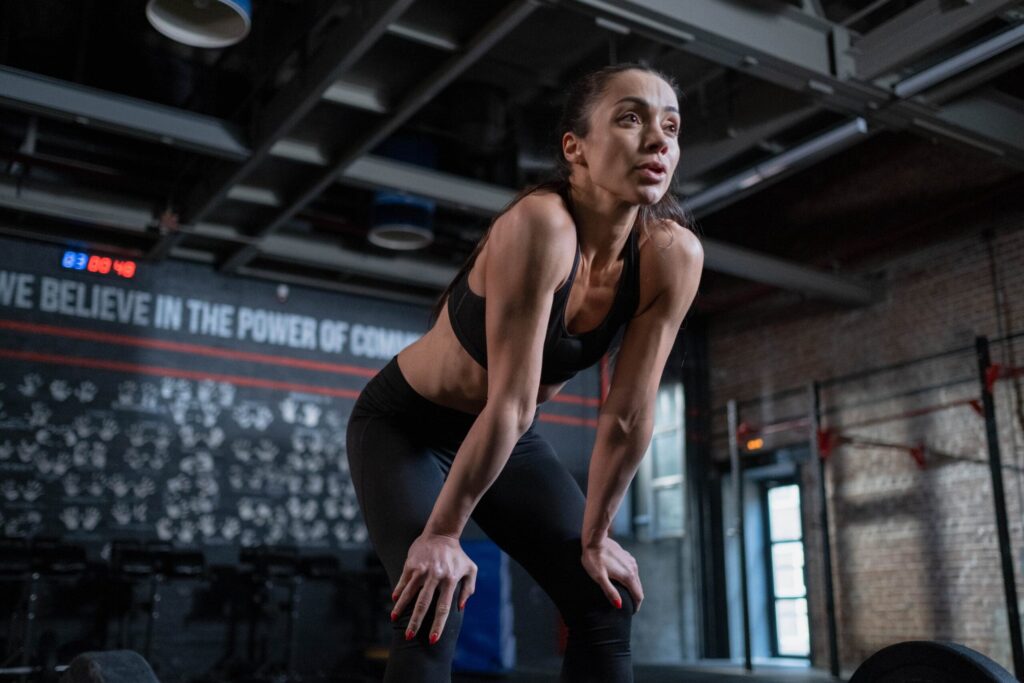Check out just 3 exercises you need to strengthen your whole body.
Functional strength refers to the physical ability to perform daily movements and tasks with efficiency, stability, and control. Rather than focusing solely on isolated muscles or lifting heavy weights, it’s about developing strength that connects directly to real-world activity.
Functional strength training focuses on movements that imitate or directly improve body functions in everyday life, such as bending, twisting, pushing, pulling, and carrying. By enhancing functional strength, individuals are better able to cope with the demands of everyday activities, sports and unexpected challenges, resulting in better overall quality of movement and reduced risk of injury.
Functional strength prioritizes movements that are dynamic, articulated, and work the core for stability. This approach not only builds muscle strength, but also promotes coordination, balance and joint mobility, contributing to a balanced and adaptable body foundation. And it was none other than Adam Sinikki who came up with his list of just three exercises needed for full-body strengthening.
Adam Sinicki Known online as “The Bioneer”. He is a health and fitness writer and personal trainer who has amassed nearly half a million subscribers on his channel. YouTube channel.

See all below.
Just 3 Exercises to Strengthen Your Whole Body
in https://youtu.be/xcVb8v-NiUY In the video, Adam Sinicki ponders the idea of paring down his favorite exercises into minimal sets that provide a comprehensive workout. He talks about the concept of “Sanctional Three”. Here’s his set of three exercises that he believes can provide a balanced, full-body workout. He emphasizes the need to train different aspects of performance such as mobility and rotation.
Adam called the first exercise “lizard crawl” explains its benefits in terms of strength training, mobility and dynamic movement. He goes into more detail on how to perform the exercises correctly in the video at the end of this article, but here’s a quick overview.
To perform a lizard crawl, follow these steps:
- Start position: Start in a quadrupedal position on the floor. This means that your hands are under your shoulders and your knees are under your hips. Keep your back parallel to the ground.
- Contralateral movement: Extend your right arm forward while simultaneously extending your left leg straight back. This is the opposite movement characteristic of lizard crawling.
- Push and Crawl: Extend your right arm forward and extend your left leg back as you begin to push your body off the ground. This movement is similar to a one-arm push-up. This combination of reaching and pushing propels the body forward.
- Alternate Side: After pushing out, repeat the same movement on the other side. Extend your left arm forward while extending your right leg back. Press the ground again to move your body forward.
- Maintain core stability: Keep your core tight and your body parallel to the ground throughout the crawl. Avoid sagging or twisting your hips as you move.
- Controlled movement: Crawls are done in a controlled and purposeful way. Try to maintain a smooth rhythm and fluid movement while alternating between left and right.
- Dynamic aspect: Crawling lizards involves a dynamic element, so be open to slight variations in movement with each step. This helps improve coordination, agility and overall body control.
- Continuous operation: Repeat the crawling pattern on the other side to move forward or cover a specified distance. To further challenge yourself, you can crawl uphill, downhill, or change direction.
Remember that the lizard crawl is a complex move that uses multiple muscle groups and requires coordination. Helps improve upper body strength, core stability, shoulder mobility, and hip mobility. As with any exercise, it’s important to start at a comfortable level and gradually increase the intensity as you become more comfortable with the movement.
How to build muscle twice as fast
Next, Sinicky introduces “Clean and press the crossbody” as the second exercise. He describes movement patterns, highlighting hip hinge and squat combinations along with vertical pressing movements to build shoulder strength. This movement is done with a kettlebell.
“You are going to put it [kettlebell] Sit on the floor in front of one leg, squat down and hinge down, then extend the opposite arm into a rack position and push it overhead. Note that this is clean and press, not clean and jerk, ”Sinicki explains.


How to find out your real age by taking the fitness age challenge
Third Exercise “”dead weight column” is introduced as a horizontal pull movement. Adam discusses the benefits for improved posture, shoulder stability, and posterior deltoid work. He also mentions an advanced variation, the “arch-back pull-up.”
To perform a dead weight row, follow these steps:
- setting: Look for a sturdy horizontal bar like the Smith Machine Bar or TRX Suspension Trainer. The bar should be at hip height or slightly higher. When using the TRX, adjust the straps so the handles are at hip height.
- Grab the bar: Stand facing the bar and reach out to grab the bar with an overhand grip (palms facing away from you). Your hands should be slightly wider than shoulder width.
- Establish your position: Lean back and walk your feet forward so that your body is at an angle to the ground. Your heels should touch the floor and your body should form a straight line from head to heels. The further forward you walk, the more difficult the exercise.
- Rowing behavior: Bend your elbows and tuck your shoulder blades together to lift your chest toward the bar. Concentrate on using your back muscles to initiate the movement. The body should move in a straight line.
- Peak contraction: At the top of the movement, your chest should be close to the bar and your elbows should be bent at about a 90 degree angle.
- Descent stage: Slowly lower your body to the starting position while maintaining control. Extend your arms fully, but keep your elbows slightly bent to keep your muscles tense.
- repetition: Repeat as many times as needed. Aim for controlled, smooth movements throughout the exercise.
That’s just three Shinikki moves you need to strengthen your whole body. To fully understand why he chose these exercises, watch his full video below.
Just 5 Exercises You Need to Look Cool
5 Ways of Gradual Overload to Force Muscle Growth
5 Testosterone Boosting Foods Men Should Eat
How often should I train?
To build functional strength, we generally recommend aiming for a training routine that includes strength training 2-3 times per week. This frequency allows for proper recovery between sessions while providing consistent stimulation that promotes increased strength and improved movement. Consistency is important because functional strength is not just about short-term results. It’s about laying the foundation for physical performance that leads to daily activities and overall health.


Consistency is important for several reasons. First, it promotes gradual adaptation in the body. Regular training signals your body to adapt and get stronger over time. Second, consistency can reinforce good behavior patterns. Functional strength training focuses on movements that mimic real-life activities, and consistent practice can engrave these patterns into muscle memory, making them more natural and efficient. Third, maintaining a consistent routine helps prevent muscle imbalances by promoting strength balance and joint stability, reducing the risk of injury. Finally, functional strength is a long-term goal and requires continuous effort and dedication to achieve lasting results, which underpins consistency.
How to increase strength and mobility at the same time
12 Unique Exercises You Don’t Do (But You Should)
Best exercises for a healthier and longer life

